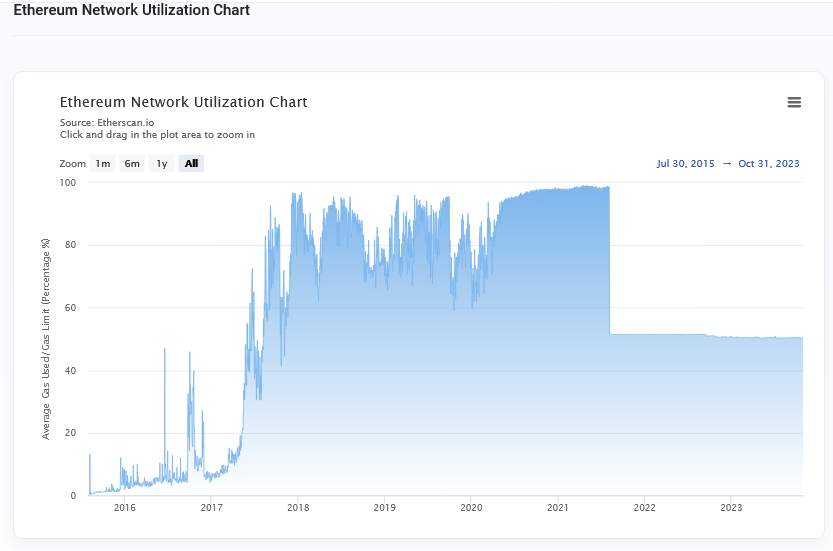Going by the handle “@bkiepuszewski,” one X user contends that the transaction processing speed (TPS) metric analysts rely on to measure how fast a blockchain network like Ethereum or the BNB Chain processes transactions is flawed.
Laying out reasons on X, the decentralized finance (DeFi) researcher is convinced that using an alternative metric, the User Ops per second (UOPS), could paint a clearer picture of how well a blockchain is utilized at all times.
Measuring Network Utilization
Typically, blockchain utilization measures how much a given network, for instance, Bitcoin or Ethereum, is being used at a given point. This is critical because it can be used to measure adoption levels since those with higher utilization rates tend to have a broader, active base, which can make it successful over the long haul.
To gauge activity, this metric considers the number of transactions processed every second when dealing with simple transfers or the total value locked (TVL) when dealing with smart contracts deployed.
As of November 1, the average network utilization rate in Ethereum, based on Etherscan data, is around 50%, down from about 100% registered in 2021. Meanwhile, the Bitcoin Transactions Per Day as of early November stood above 433,000, a nearly 2X increase from late October.
Usually, in the case of Bitcoin, considering it is a transactional layer, whenever prices rise, more BTC-related transactions are expected as users hope to increase the emerging trend.
Whether the UOPS system will be adopted in the long term remains to be seen. However, what’s clear is that the UOPS will consider the number of user operations that the network in question can process every second, all while factoring in the level of complexity of that transaction.
Out of the UOPS, analysts will instantaneously know how well the blockchain can handle user load without the risk of congestion, as usually is the case in Ethereum when markets are trending higher.
The Rise Of Ethereum Layer-2s
At the same time, according to @bkiepuszewski, using UOPS instead of TPS brings clarity considering the widespread use of layer-2 solutions, including OP Mainnet, Base, and StarkNet, which bundles transactions offline before confirming them on the mainnet as a single transfer. The more dapps choose layer-2 solutions, the more flawed blockchain throughput calculation will be if TPS guides.
Presently, more developers are opting for layer-2 as their base to avoid scaling issues while accessing the latitude to deploy intensive dapps such as social media platforms, as seen with Friend.tech. According to L2Beat, Arbitrum and OP Mainnet have TVLs of over $6.5 and $2.9 billion, respectively.
